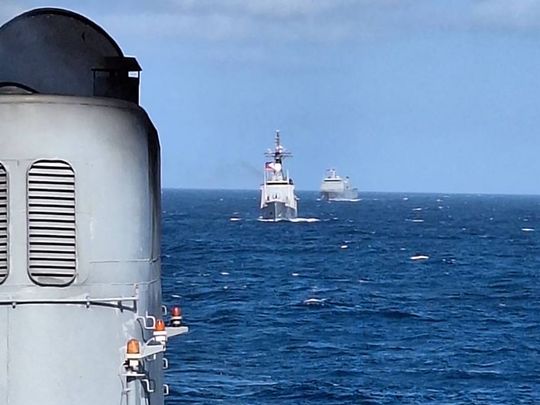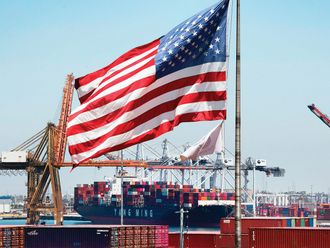
Commencing a two-day joint patrol in the South China Sea on Wednesday, the Philippines and the United States escalated their security engagements, a development that is expected to upset China.
Amid rising tensions in the South China Sea, where the Philippines and China have been involved in disputes, the treaty allies heightened their collaborative efforts last year.
The initial joint patrols were initiated in November, featuring three days of military drills in areas close to Taiwan and in the West Philippine Sea.
The Philippine military said their second joint patrol this week involved four vessels from the Philippine navy and four ships from the US Indo-Pacific command that include an aircraft carrier, a cruiser and two destroyers, as per Reuters.
Philippine armed forces chief Romeo Brawner said the second such joint military activity this week marked a “significant leap” in Manila’s alliance with the US and its interoperability with the American military.
The Philippines and China are currently embroiled in a spat over the areas in the South China Sea (SCS). The dispute revolves around overlapping claims in the SCS, a region believed to be rich in energy and fisheries, through which one-third of global shipping passes.
Top economies, including China and Japan, heavily depend on the SCS sea lanes, making them vulnerable to the chokepoint at the Malacca Strait, a narrow sea lane between Singapore and Malaysia, for their energy supplies and merchandise.
Given the history of military alliances and the 2014 Enhanced Defense Cooperation Agreement (EDCA), the Philippines’ political leadership, military, and bureaucracy are considered close to the America.
The Duterte presidency (2016 to 2022) was an exception, although some argue it was a realistic balance between the US and the regional power, China, which is the Philippines’ largest trading partner with substantial investments and a growing economic footprint.
Issues over energy-rich area
Ferdinand “Bongbong” Romualdez Marcos Jr. had publicly supported Duterte’s China policy, advocating for the policy of engagement. However, the economic cooperation plans with China have faced issues mainly over the energy-rich area.
Reports suggest that unable to make progress with China, Marcos opted to expand military ties with the US under the EDCA. Some doubt this theory, pointing to the speed at which the US responded, indicating a pre-existing understanding.
Meanwhile in a security cooperation boost with Japan, the Philippines received a Japanese-made air surveillance radar system to be installed on an airbase overlooking disputed waters. The two countries have also discussed reciprocal access for military deployment on each other’s soil, indicating Marcos’s partnership in the American-led coalition.
“Our alliance (with the US) is stronger than ever, sending a message to the world. We are advancing a rules-based international order and a free and open Indo-Pacific region in the face of regional challenges,” Brawner said.
While the latest patrols are likely to irk Beijing, it may still consider reopening consultations with the Philippines if the latter expresses a willingness to jointly manage maritime disputes.
Sajjad Ashraf served as an adjunct professor at the Lee Kuan Yew School of Public Policy, National University of Singapore from 2009 to 2017. He was a member of Pakistan Foreign Service from 1973 to 2008 and served as an ambassador to several countries.










